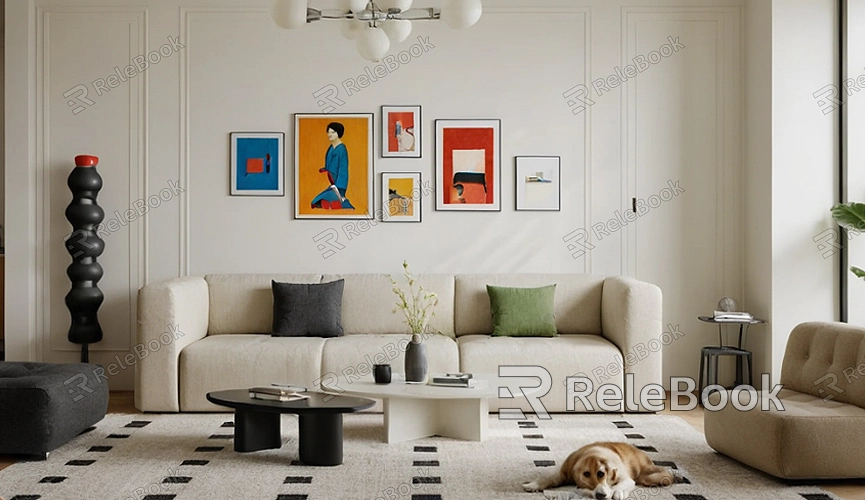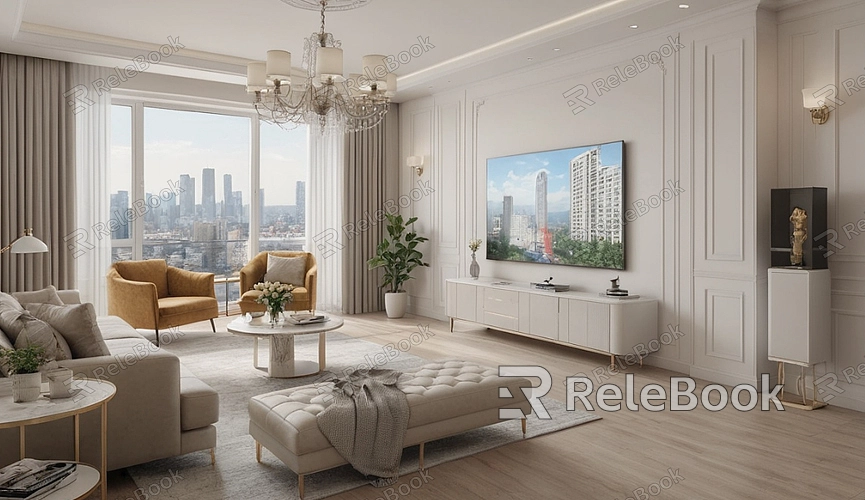How to Assign UV Textures to Geometry in Maya?
In 3D modeling and rendering, UV mapping is one of the essential processes. It allows you to apply 2D images to 3D geometry, adding rich detail and realism to your models. In Maya, assigning UV textures to geometry involves several steps, including UV unwrapping, texture mapping, and material assignment. This article will guide you through the process of applying UV textures to geometry in Maya, helping you master these techniques and improve both your modeling and rendering efficiency.

What is UV Mapping?
Before diving into the process of assigning UV textures to geometry in Maya, it's important to understand what UV mapping is. In simple terms, UV mapping is the process of unwrapping the surface of a 3D model into a 2D plane and then applying a texture or image to this 2D representation. By doing this, the texture is accurately mapped to the 3D model's surface, making it appear more realistic.
Typically, UV mapping involves cutting and unfolding the model’s surface into a 2D plane, much like peeling the skin off an orange and then flattening it out. In Maya, this process is called UV unwrapping, and it provides the basis for adjusting texture mapping on the model.
Creating and Editing UVs
1. Automatic UV Unwrapping
In Maya, the first step in creating UVs is to unwrap the surface of your model into a 2D plane. Maya offers several tools for this, and one of the easiest methods is to use the automatic UV unwrapping tool. With automatic unwrapping, Maya will generate the UVs for you and map them to a suitable space.
- Select the geometry you want to unwrap.
- In the “UV Editor,” click on “Create UV” and select “Automatic Mapping.”
- Maya will automatically calculate and display the UVs in the UV Editor.
2. Manual UV Editing
Although the automatic unwrapping tool works well in most cases, there are times when you might need to manually adjust the UVs for more precise control. Maya provides several UV editing tools to help you modify and optimize the UV layout based on your specific needs.
- In the UV Editor, select the UVs you want to edit.
- Use the “Select” tool, transformation tools, and other functions to manually move, rotate, or scale the UVs to fit them properly on the 2D plane.
- Use the “Sew” tool to stitch together separated UVs and avoid visible seams in the texture.
Manual UV editing requires more technical skill, especially when dealing with complex models, so patience and attention to detail are important.

Applying Texture Maps to UVs
Once you've unwrapped the UVs and adjusted the layout, the next step is to apply the texture map to the model. Maya uses a material system to achieve this, where you assign a material to the model and then assign the texture image to that material.
1. Creating Materials and Assigning Textures
- Select your model and open the “Attribute Editor.”
- Under the material section, click on “Create New Material” and choose an appropriate material type (e.g., “Lambert” or “Phong”).
- In the material attributes, find the “Color” option and click the checkerboard button next to it.
- In the file browser that appears, select the texture image (e.g., a JPG or PNG file).
- Load the texture image into the “Color” property of the material.
2. Adjusting UV Mapping
If the texture doesn't look right on the model, it might be due to improper UV layout or texture scaling issues. In this case, go back to the UV Editor and adjust the UV layout or reapply the UV projection.
3. Previewing the Texture in the Viewport
After applying the texture, you can preview how it looks on the model in Maya's viewport. To get a more accurate representation, switch to a rendering view to see how the model looks under different lighting conditions.
Binding UV Textures to Materials
Binding the texture to the UV layout is a crucial step to ensure the texture is correctly applied to the model. In Maya, this is done through the material editor.
1. Assigning Textures to Different Channels
In addition to the “Color” channel, you can also apply textures to other material channels, such as normal maps, reflection maps, and more. This allows you to add additional details to your model and make it appear more realistic.
- In the material attributes, find the other texture channels (such as “Reflection,” “Normal,” etc.).
- Use the same process to assign the corresponding texture files to these channels.
2. Adjusting Texture Offset and Scale
Sometimes, the texture may need to be offset or scaled to better fit the UV layout. In the “Texture Editor,” you can adjust the texture's position, rotation, or scaling in real-time to ensure it fits properly on the model.
Assigning UV textures to geometry in Maya involves multiple steps, from UV unwrapping to texture application and material binding. By mastering these techniques, you can add realistic and detailed textures to your 3D models, whether for use in games, animations, or other projects. With practice, you’ll become more proficient in applying these techniques, improving both your modeling and rendering skills.Finally, if you’re looking for more 3D models and texture resources, be sure to visit Relebook, where you can download high-quality assets to help you achieve better results in your creative projects.
FAQ
Why is my texture not displaying correctly on the model?
This is usually due to improper UV unwrapping or the texture not being correctly assigned to the material. Make sure the UVs are unwrapped properly and the texture is correctly assigned in the material editor.
How can I avoid UV overlaps?
UV overlaps are a common issue, especially with complex models. To avoid this, you can use Maya’s “Automatic Mapping” feature or manually adjust the UV layout to ensure each UV island has enough space.
How can I improve the detail of my texture?
If the texture looks blurry or lacks detail, consider increasing the resolution of your texture or using a higher-quality image. You can also enhance the details with normal maps or other texture types to add more depth.
How do I fix visible seams on my model?
If you notice visible seams on your model, try using the “Sew” tool or adjust the UV seams to make them less noticeable. Sometimes, careful tweaking of the UV layout is required to avoid texture artifacts at the seams.

